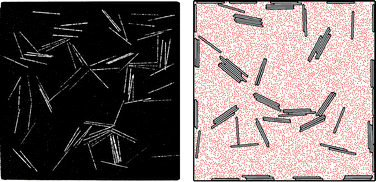Depletion forces drive polymer-like self-assembly in vibrofluidized granular materials†
Abstract
Ranging from nano- to granular-scales, control of particle

* Corresponding authors
a
Program in Physical Biology, Eunice Kennedy Shriver National Institute of Child Health and Human Development National Institutes of Health, Bethesda, Maryland, USA
E-mail:
galanisj@mail.nih.gov
b
Institute of Chemistry and The Fritz Haber Center, The Hebrew University of Jerusalem, Jerusalem, Israel
E-mail:
daniel@fh.huji.ac.il
Ranging from nano- to granular-scales, control of particle

 Please wait while we load your content...
Something went wrong. Try again?
Please wait while we load your content...
Something went wrong. Try again?
J. Galanis, R. Nossal and D. Harries, Soft Matter, 2010, 6, 1026 DOI: 10.1039/B918034F
To request permission to reproduce material from this article, please go to the Copyright Clearance Center request page.
If you are an author contributing to an RSC publication, you do not need to request permission provided correct acknowledgement is given.
If you are the author of this article, you do not need to request permission to reproduce figures and diagrams provided correct acknowledgement is given. If you want to reproduce the whole article in a third-party publication (excluding your thesis/dissertation for which permission is not required) please go to the Copyright Clearance Center request page.
Read more about how to correctly acknowledge RSC content.
 Fetching data from CrossRef.
Fetching data from CrossRef.
This may take some time to load.
Loading related content
